Now Accepting NEW Patients!
Stay informed about common illnesses affecting children in our community. At Pinecone Pediatrics, we provide up-to-date information on seasonal illnesses like the flu, colds, RSV, and more. Learn about symptoms, prevention tips, and when to seek medical care. If your child is showing signs of illness, our pediatricians are here to help with expert guidance and treatment options to ensure a speedy recovery. Contact us to schedule an appointment or get advice on managing your child’s symptoms.
Contact dermatitis is a common cause of�a rash in one area. This is especially true of a small rash that will not go away. Contact dermatitis usually starts as raised red spots. It can change to blisters, as in poison ivy. The rash is itchy. Contact dermatitis is an allergic skin rash. The location of the rash may suggest the cause:
Call 911 Now
Call Doctor or Seek Care Now
| Contact Doctor Within 24 Hours
Contact Doctor During Office Hours
| Self Care at Home
|
Disclaimer: this health information is for educational purposes only. You, the reader, assume full responsibility for how you choose to use it.
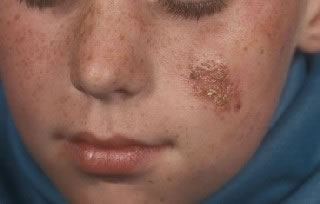
This shows impetigo on the face. Impetigo is a skin infection caused by bacteria. The infection causes a red sores which leak fluid. This area will then dry and become crusty as it heals.
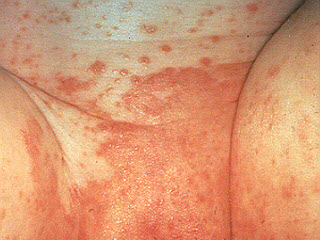
This photo shows a red diaper rash in the area under the diaper.
Any diaper rash that lasts longer than a couple days can become infected with yeast. Note the red spots outside the main area of redness.
If a yeast infection is suspected, clotrimazole cream (such as Lotrimin; over-the-counter) should be applied 4 times per day.
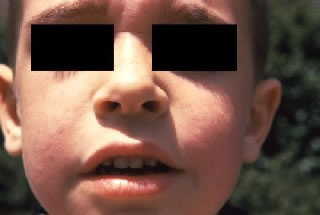
There is redness and puffiness of both cheeks; this is the first sign of Fifth's Disease.
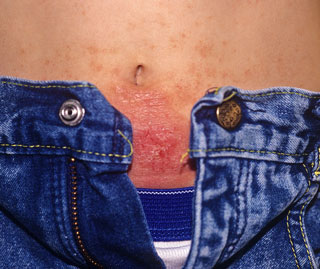
This shows a rash that was caused from the skin touching the snap on the jeans. This person is allergic to the nickel in the snap. The area is red and crusty.
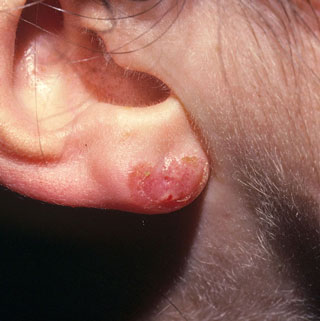
This shows a rash that was caused from a nickel allergy. The allergic rash is from the nickel (metal) in the earring. It is red, crusty and moist.
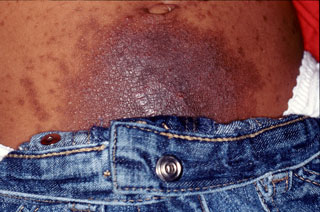
This shows a rash that was caused from the skin touching the snap on the jeans. This person is allergic to the nickel in the snap. The area is raised and crusty.
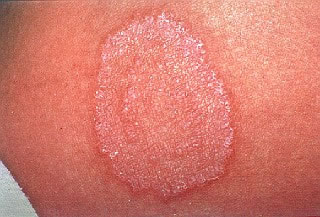
This is a picture of ringworm. The area is round and pink. It has a raised, rough scaly border. The ring slowly grows in size. It is often slightly itchy.
This is caused by a fungus, not a worm. It can be passed from person to person. If you notice a rash like this, contact your doctor for treatment.
Copyright 2000-2025 Schmitt Pediatric Guidelines LLC.